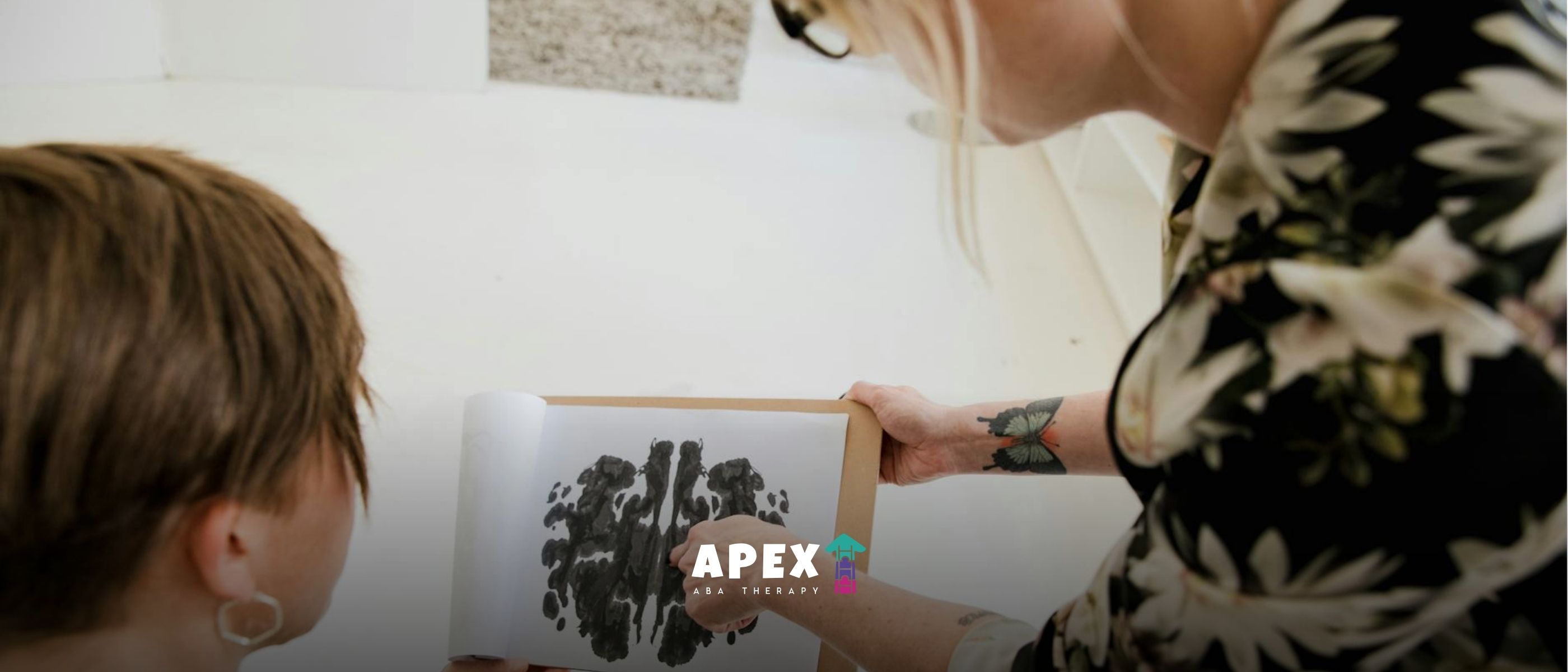ABA Therapy Enhancing Social Skills: A Key to Improved Communication and Interaction for Children with Autism
How ABA Therapy Helps Children Build Social Skills

ABA Therapy Enhancing Social Skills: A Key to Improved Communication and Interaction for Children with Autism
Social skills are essential for individuals to engage effectively in social interactions, build relationships, and navigate everyday situations. For children with Autism Spectrum Disorder (ASD), developing these skills can be particularly challenging. While social communication deficits are common among children with autism, Applied Behavior Analysis (ABA) therapy has proven to be one of the most effective ways to teach and enhance social skills.
In this blog, we explore how ABA therapy can help children with autism improve their social skills, why early intervention is crucial, and how parents, families, and professionals in North Carolina, Georgia, and Maryland can implement these strategies to support children in their everyday interactions.
What Are Social Skills, and Why Are They Important?
Social skills involve the ability to interact with others in a manner that is appropriate to the social context. These skills include communication, empathy, turn-taking, problem-solving, emotional regulation, and the ability to form and maintain relationships.
For children with autism, developing these skills can be difficult due to challenges with understanding social cues, initiating conversations, interpreting emotions, and navigating social norms. However, improving social skills is not just about reducing behavioral challenges—it also enhances a child's ability to connect with peers, build friendships, and gain independence.
Key Social Skills for Children with Autism:
- Nonverbal communication: Understanding body language, facial expressions, and gestures.
- Verbal communication: Using appropriate language and tone in conversations.
- Emotional regulation: Identifying and managing emotions in social contexts.
- Perspective-taking: Understanding how others might feel or think.
- Initiating and maintaining conversations: Asking questions, responding appropriately, and contributing to discussions.
- Cooperation and turn-taking: Sharing, playing, and waiting for turns.
How ABA Therapy Enhances Social Skills in Children with Autism
ABA therapy is grounded in the principles of behaviorism, focusing on how environmental factors influence behavior and learning. Through structured intervention, ABA teaches children with autism new skills by breaking tasks into small, manageable steps and reinforcing positive behaviors.
When it comes to enhancing social skills, ABA therapy is highly effective because it uses systematic techniques to target specific social behaviors, making these skills more concrete and achievable for children with autism.
1. Structured Social Skills Training
ABA therapists break down social skills into teachable components, such as making eye contact, greeting others, or starting a conversation. By using role-playing, modeling, and reinforcement, children practice these skills in a structured and safe environment. This approach allows children to master specific skills, which can later be applied in real-world social situations.
- Modeling: Therapists demonstrate the behavior they want the child to learn.
- Role-playing: Children practice the behavior with the therapist or in group settings.
- Positive reinforcement: When children successfully demonstrate a social skill, they are rewarded to encourage repetition.
2. Using Visual Supports and Social Stories
Children with autism often benefit from visual supports that clarify social situations and expectations. Social stories, which are brief narratives that explain social situations and the appropriate behaviors in them, are commonly used in ABA therapy to help children understand complex social scenarios.
For example, a social story could describe how to introduce oneself to a new classmate or what to do when someone is upset. These visual and narrative aids help children process social interactions more easily and feel prepared for real-life situations.
3. Promoting Peer Interactions
ABA therapy can create structured opportunities for children to practice social skills with peers in controlled environments. Peer interactions, whether in therapy sessions or group activities, help children learn reciprocity, negotiation, and problem-solving in social contexts.
Therapists may set up playdates or group activities where children can practice turn-taking, sharing, and cooperation with their peers. By reinforcing positive peer interactions and offering guidance when challenges arise, ABA therapy helps children develop the confidence to interact in diverse social settings.
Benefits of ABA Therapy for Enhancing Social Skills
The benefits of ABA therapy in enhancing social skills are wide-reaching. Some of the most significant outcomes for children with autism include:
1. Increased Communication Skills
ABA therapy teaches children to use both verbal and nonverbal communication effectively. By breaking down communication into simple steps, children can learn how to make requests, ask for help, initiate conversations, and express emotions.
2. Greater Independence in Social Situations
As children with autism learn social skills, they become more independent in navigating social situations. ABA therapy fosters self-confidence and helps children engage more fully with their peers, teachers, and family members.
3. Improved Social Relationships
Children who receive ABA therapy often experience a significant improvement in their ability to form and maintain relationships. They learn how to initiate and maintain conversations, recognize social cues, and interact appropriately with others.
4. Reduced Challenging Behaviors
By teaching alternative, positive social behaviors, ABA therapy can reduce the frequency of challenging behaviors such as tantrums, aggression, or withdrawal, which often occur when children with autism struggle to communicate or connect with others.
5. Better Emotional Regulation
ABA therapy also helps children learn how to recognize and manage emotions. With improved emotional regulation, children can better handle frustration, anxiety, and social rejection, which ultimately enhances their ability to engage in social interactions.
How to Implement ABA Therapy to Enhance Social Skills at Home and School
Families and educators in North Carolina, Georgia, and Maryland can support the development of social skills by using the following ABA strategies at home or in school settings:
1. Create a Consistent Routine
Children with autism thrive on structure and predictability. Creating a consistent routine for practicing social skills whether it’s during meal times, playtime, or transitions—helps children internalize these skills.
2. Use Positive Reinforcement
Reinforce positive social behaviors by providing praise, rewards, or privileges when a child demonstrates appropriate social skills. This could include verbal praise, a favorite activity, or a tangible reward.
3. Encourage Peer Interactions
Encourage structured peer interactions during activities like group play, classroom discussions, or teamwork exercises. Provide guidance and support during these interactions to ensure the child is practicing the correct social behaviors.
4. Model Appropriate Behavior
Parents, teachers, and therapists should model positive social behaviors consistently. By demonstrating how to make eye contact, take turns, and handle social challenges, children can learn through observation.
5. Monitor Progress and Adjust Interventions
As children develop new social skills, it’s important to track their progress and adjust interventions as needed. Behavioral data collected during ABA sessions can help identify areas where the child excels or needs additional support.
Conclusion
ABA therapy has proven to be a highly effective way to enhance social skills in children with autism. By breaking down complex social behaviors into manageable steps, providing structured reinforcement, and using interactive techniques like role-playing and social stories, ABA helps children learn how to navigate social situations with confidence. The early and consistent practice of social skills in both structured therapy settings and natural environments can lead to significant improvements in communication, peer relationships, and emotional regulation.
For families in North Carolina, Georgia, and Maryland, ABA therapy offers a powerful tool to help children with autism gain the skills they need to thrive socially and emotionally, leading to greater independence and quality of life.
At Apex ABA, we specialize in helping children with autism, and Maryland enhance their social skills through personalized ABA therapy in North Carolina, Georgia, and Maryland. Our experienced therapists work with each child to build meaningful communication, strengthen peer relationships, and improve emotional regulation.
Learn how we can support your child’s social development and ensure their success in everyday social situations. Contact us today!
SOURCE:
https://www.autismparentingmagazine.com/benefits-of-autism-visual-supports/?srsltid=AfmBOooiVV3Eak1eC1bRewEGb6Y7_WMSxlHPBoPojgFcZSQ2Dva2kOhw
https://pubmed.ncbi.nlm.nih.gov/31451016/
https://www.reddit.com/r/AutisticPride/comments/1fe7l4v/the_downfalls_of_social_skills_training_and_aba/
https://www.cdc.gov/autism/treatment/index.html
https://my.clevelandclinic.org/health/treatments/25197-applied-behavior-analysis
Frequently Asked Questions
How does ABA therapy help children with autism improve social skills?
ABA therapy helps children with autism by breaking down complex social behaviors into manageable steps. Techniques like role-playing, social stories, and positive reinforcement are used to teach communication, social interaction, and emotional regulation, providing children with the tools they need to navigate social situations effectively.
What are some common social skills taught in ABA therapy?
In ABA therapy, children learn skills such as making eye contact, taking turns, initiating conversations, reading facial expressions, expressing emotions appropriately, and engaging in group play. These skills help children build positive relationships and improve their overall social functioning.
Can ABA therapy be used to help older children with autism improve social skills?
Yes, ABA therapy is effective for children of all ages, including older children and teens. The therapy can be adapted to target specific social goals, such as peer interaction, adapting to group dynamics, and handling social challenges in school or community settings. The principles of ABA can help individuals with autism improve social skills at any stage of development.

Can a Child Have Autism and Still Talk Normally?
Can a Child Have Autism and Still Talk Normally?

What Are the Red Flags for Autism in a 2-Year-Old?
Autism Red Flags in 2-Year-Old Children | Apex ABA

Is Autism a Lifelong Condition?
Is Autism a Lifelong Condition? Understanding The Journey

What is the Difference Between Autism and Sensory Processing Disorder?
Autism vs Sensory Processing Disorder Differences | Apex ABA

What's the Difference Between Autism and Speech Delay?
Autism vs Speech Delay & Key Differences Explained | Apex

ABA Therapy Enhancing Social Skills: A Key to Improved Communication and Interaction for Children with Autism
How ABA Therapy Helps Children Build Social Skills

Misconceptions About ABA Therapy: Clearing Up the Myths
Common Misconceptions About ABA Therapy |Apex ABA.

Best Age to Start ABA Therapy & What Parents Should Know
Best Age to Begin ABA Therapy for Children | Apex ABA

What’s the Difference Between High-Functioning Autism and Asperger’s?
Difference Between High-Functioning Autism and Asperger’s

ABA Therapy in North Carolina: A Complete Guide for Families
Learn everything about ABA therapy in North Carolina, including services, costs, insurance coverage, and how to choose the best ABA provider in North Carolina.

Life-Changing ABA Therapy Case Studies You Need to Know
Real Success Stories from ABA Therapy Journeys | Apex ABA

What Does It Mean to Be “On the Spectrum”?
What Does It Mean to Be on the Autism Spectrum? | Apex ABA

Is Autism a Mental Illness or a Developmental Disorder?
Mental Illness or Developmental Disorder Explained

Can Children “Outgrow” Autism?
Can Children Outgrow Autism? Understanding the Facts

Is Autism More Common in Boys Than Girls?
Autism in Boys vs Girls: What the Research Reveals

Understanding the Power of Functional Behavior Assessment ABA
Effective ABA Techniques for Behavioral Intervention

Discover How ABA Helps ADHD in Your Child’s Life
How ABA Therapy Helps Children with ADHD | Apex ABA

ABA Therapy vs Preschool: Making the Right Choice Explained
Learn the key differences between ABA therapy and preschool to help you choose the best option for supporting your child’s early learning and development.

Which Personality Type Is Most Likely to Be Autistic?
Which Personality Type Is Most Likely to Be Autistic? | Apex ABA

Why Consistency Matters: What Happens If ABA Therapy Ends Prematurely
What Happens If ABA Therapy Is Stopped Too Early? | Apex ABA

How Can You Gain an Autistic Person’s Attention? Tips for Meaningful Connection
How Can You Gain an Autistic Person’s Attention?

Sensory Sensitivity and Sixth Sense: What Autism Research Shows
Do Autistic People Have Sixth Sense? | Apex ABA

What Happens If Autism Is Left Untreated?
Can Autism Get Worse If Untreated? | Apex ABA

What Not To Do With An Autistic Child: Avoid These 10 Mistakes
What Not To Do With An Autistic Child? | Apex ABA

Coping with Regressive Autism: Tips for Parents
What is Regressive Autism? | Apex ABA

Do Autistic Kids Live with Parents Forever? Here’s the Reality
Do autistic kids live with parents forever? Discover the facts about independence and living arrangements in autism with expert-backed insights.

Red Flags in ABA Therapy: What Parents Must Watch For
What are the red flags in ABA therapy? Learn to identify warning signs for safe, effective autism treatment in this blog.

Can You Go from Level 3 Autism to Level 1? Is It Possible?
Can you go from level 3 autism to level 1? Learn about progress, therapy, and support options with expert help from Apex ABA.

Autism vs Introversion: How to Tell the Difference
Is it autism or just introversion? Learn the key differences and signs with expert insights from Apex ABA.

ABA for Managing Transitions: Tips to Ease Change for Kids
Learn how ABA for managing transitions helps children with autism handle change smoothly.

Understanding the 7 Dimensions of ABA for Better Outcomes
Discover the 7 Dimensions of ABA and how they can lead to better outcomes.

5 Unique Autistic Love Languages You Should Know About
Discover the 5 unique autistic love languages that can enhance your relationships.

Transforming Futures: Improving Lives of Kids with Autism
Discover how innovative strategies are focused on improving lives of kids with autism.

ABA Therapy Techniques for Addressing Repetitive Behaviors in Autism
Harnessing ABA Strategies to Tackle Repetitive Behaviors in Autism

The Role of ABA Therapy in Enhancing Communication Skills
Transforming Communication for Children with Autism Through ABA Therapy

How ABA Therapy Supports Effective Communication in Nonverbal Children
Unlocking Speech Through ABA: Transformative Paths for Nonverbal Children

How to Help Your Child Transfer Skills Learned in ABA Therapy to Real Life
Unlocking Real-World Success for Children in ABA Therapy

How ABA Therapy Helps Children Develop Better Organizational Skills
Empowering Children with ABA Therapy for Enhanced Organizational Skills

The Importance of Creating a Structured Routine in ABA Therapy
How Structured Routines Transform ABA Therapy for Autism

The Role of ABA Therapy in Developing Conflict Resolution Skills
How ABA Therapy Transforms Conflict Resolution Competence

The Importance of Generalization in ABA Therapy for Autism
Unraveling the Role of Generalization in Enhancing ABA Therapy Outcomes

Why ABA Therapy is Crucial for Parents of Children with Autism
The Transformative Impact of ABA Therapy on Families with Autistic Children

How to Involve Parents in the ABA Therapy Process
Maximize Parent Engagement in ABA Therapy for Better Outcomes

What are the Core Principles of ABA Therapy?
Exploring the Cornerstones of Applied Behavior Analysis

Why Communication is Key in ABA Therapy for Autism
The Crucial Role of Communication in ABA Therapy for Autism

Why ABA Therapy Works for Children with Autism Regardless of Severity
Effective ABA Interventions for All Levels of Autism

Why It’s Important to Maintain a Balanced Approach to ABA Therapy
Balancing Effectiveness and Ethics in ABA Therapy

The Role of ABA Therapy in Developing Adaptive Behavior Skills
Exploring How ABA Therapy Transforms Lives

The Benefits of Combining ABA Therapy with Speech Therapy
Maximizing Development with Integrated Therapy Approaches

What to Expect During an ABA Therapy Session
Demystifying ABA Therapy Sessions: A Comprehensive Overview

How ABA Therapy Enhances Cognitive Functioning in Children with Autism
Exploring the Influence of Applied Behavior Analysis on Autism Cognition

How ABA Therapy Helps Children with Autism with Transitions Between Activities
Easing Transitions for Children with Autism: The Role of ABA Therapy

How to Foster Cooperation Between Parents and Therapists in ABA Therapy
Building Effective Partnerships in ABA Therapy

The Role of Positive Reinforcement in ABA Therapy
Exploring the Impact of Positive Reinforcement in Modern ABA Therapy

Why ABA Therapy is Effective for Children of All Ages
Understanding the Reach and Impact of ABA Therapy Across Age Groups

How to Support Your Child’s Emotional Growth with ABA Therapy
Harnessing ABA Therapy for Enhancing Emotional Development in Children with Autism

The Role of ABA Therapy in Enhancing Peer Relationships for Children with Autism
Harnessing ABA Therapy to Boost Social Connections Among Autistic Children

How to Overcome Common Challenges in ABA Therapy
Navigating Hurdles in ABA Therapy: Strategies and Solutions

How to Manage Behavioral Expectations with ABA Therapy
Understanding Applied Behavior Analysis in Behavioral Management

How ABA Therapy Promotes Emotional Regulation in Children with Autism
Unlocking Emotional Balance: ABA Therapy's Role in Autism

How ABA Therapy Improves Social Skills in Children with Autism
Harnessing ABA Therapy to Enhance Social Competency in Autistic Children

The Role of ABA Therapy in Classroom Success for Children with Autism
Harnessing ABA for Academic and Social Growth in Autism

The Importance of Evaluating and Revising ABA Therapy Goals Regularly
Regular Evaluations: The Cornerstone of ABA Therapy Success

How to Choose the Right ABA Therapy Program for Your Child
Finding the Perfect ABA Therapy Fit for Your Child

The Role of Behavior Analysts in Implementing ABA Therapy
Understanding the Vital Contributions of Behavior Analysts in ABA Therapy

The Role of RBTs (Registered Behavior Technicians) in ABA Therapy
A Closer Look at the Essential Work of RBTs in ABA Therapy

What Makes ABA Therapy Effective for Different Learning Styles?
Unraveling the Flexibility and Effectiveness of ABA Therapy

Understanding the Importance of Data Collection in ABA Therapy
The Role of Data in Shaping Effective ABA Therapy

How ABA Therapy Helps with Toilet Training in Children with Autism
Unlocking Independence: ABA's Role in Autism Toilet Training

The Importance of Encouraging Natural Play in ABA Therapy
Revolutionizing ABA Therapy with Natural Play

How to Make the Most of ABA Therapy at Home
Enhancing ABA Therapy Practices Within Your Home

How to Make ABA Therapy Fun and Engaging for Children with Autism
Transforming ABA Therapy into a Fun Learning Journey

The Role of ABA Therapy in Addressing Verbal and Nonverbal Communication in Autism
Enhancing Communication Skills in Autism Through ABA Therapy

Understanding the Role of Family in ABA Therapy for Autism
The Crucial Impact of Family Engagement in Autism Therapy

How to Handle Setbacks and Challenges in ABA Therapy
Navigating Difficulties and Setbacks in ABA Therapy for Children

How ABA Therapy Can Help Children Build Stronger Relationships with Peers
Unpacking the Influence of ABA Therapy on Peer Relationships in Children

Understanding the Concept of Shaping in ABA Therapy
Demystifying Shaping Techniques in Applied Behavior Analysis

How ABA Therapy Enhances Independent Living Skills in Autism
Unlocking Independence: The Role of ABA Therapy in Autism
.jpg)
90+ Reading Statistics, Facts and Demographics
In this article, we will dive into 60 reading statistics that shed light on the importance of reading and its impact on different aspects of life.

How ABA Therapy Can Help Children with Autism Make Better Choices
Unlocking Autistic Children's Potential with ABA Therapy

How ABA Therapy Helps Children with Autism Adapt to New Environments
The Adaptive Benefits of ABA Therapy for Autism

What Does the Research Say About the Effectiveness of ABA Therapy?
Exploring the Role and Research Behind ABA Therapy

How to Create an Effective ABA Therapy Plan for Your Child
Guiding Parents Through Effective ABA Therapy Planning

The Long-Term Benefits of Consistent ABA Therapy for Children with Autism
Unlocking Potential: Consistent ABA Therapy for Autism

Why ABA Therapy Should Be Tailored to Each Child’s Unique Needs
The Necessity of Customizing ABA Therapy for Unique Child Development

What are the Different Types of ABA Therapy?
Exploring the Varieties of ABA Therapy for Autism and Beyond

How ABA Therapy Can Improve Functional Skills in Children with Autism
Unlocking the Potential: ABA Therapy for Autistic Children

How ABA Therapy Facilitates Peer Interaction for Children with Autism
Understanding the Impact of ABA Therapy on Autism and Peer Relationships

The Importance of Early Intervention in Autism Therapy
Unlocking Potential: The Crucial Role of Early Intervention in Autism

The Role of ABA Therapy in Creating Healthy Habits for Children with Autism
Understanding How ABA Therapy Shapes Daily Life for Autistic Children

How to Create a Supportive Environment for Children Undergoing ABA Therapy
Crafting a Nurturing Space for Effective ABA Therapy

The Benefits of Incorporating Technology into ABA Therapy
Harnessing Technology for Enhanced ABA Therapy Outcomes

How ABA Therapy Helps with Stereotypic Behavior in Autism
ABA Therapy: Transforming Stereotypic Behaviors into Meaningful Interactions in Autism

What to Expect in an ABA Therapy Program for Children with Autism
Understanding ABA Therapy for Kids with Autism

How to Create a Positive Home Environment for Children Under ABA Therapy
Cultivating a Therapeutic Space for ABA Success

How ABA Therapy Can Improve Safety Awareness in Children with Autism
Empowering Safety through ABA Therapy for Kids with Autism

The Link Between ABA Therapy and Improved Academic Performance in Children with Autism
Exploring the Profound Impact of ABA on Autism-Related Educational Success

The Benefits of Early ABA Intervention for Toddlers with Autism
Unveiling the Power of ABA for Toddlers with Autism

How ABA Therapy Promotes Independence and Life Skills Development
Unlocking Independence: The Role of ABA Therapy in Life Skills Development

How to Deal with the Emotional Impact of ABA Therapy on Parents
Navigating Emotions: Support Tips for Parents in ABA Therapy



